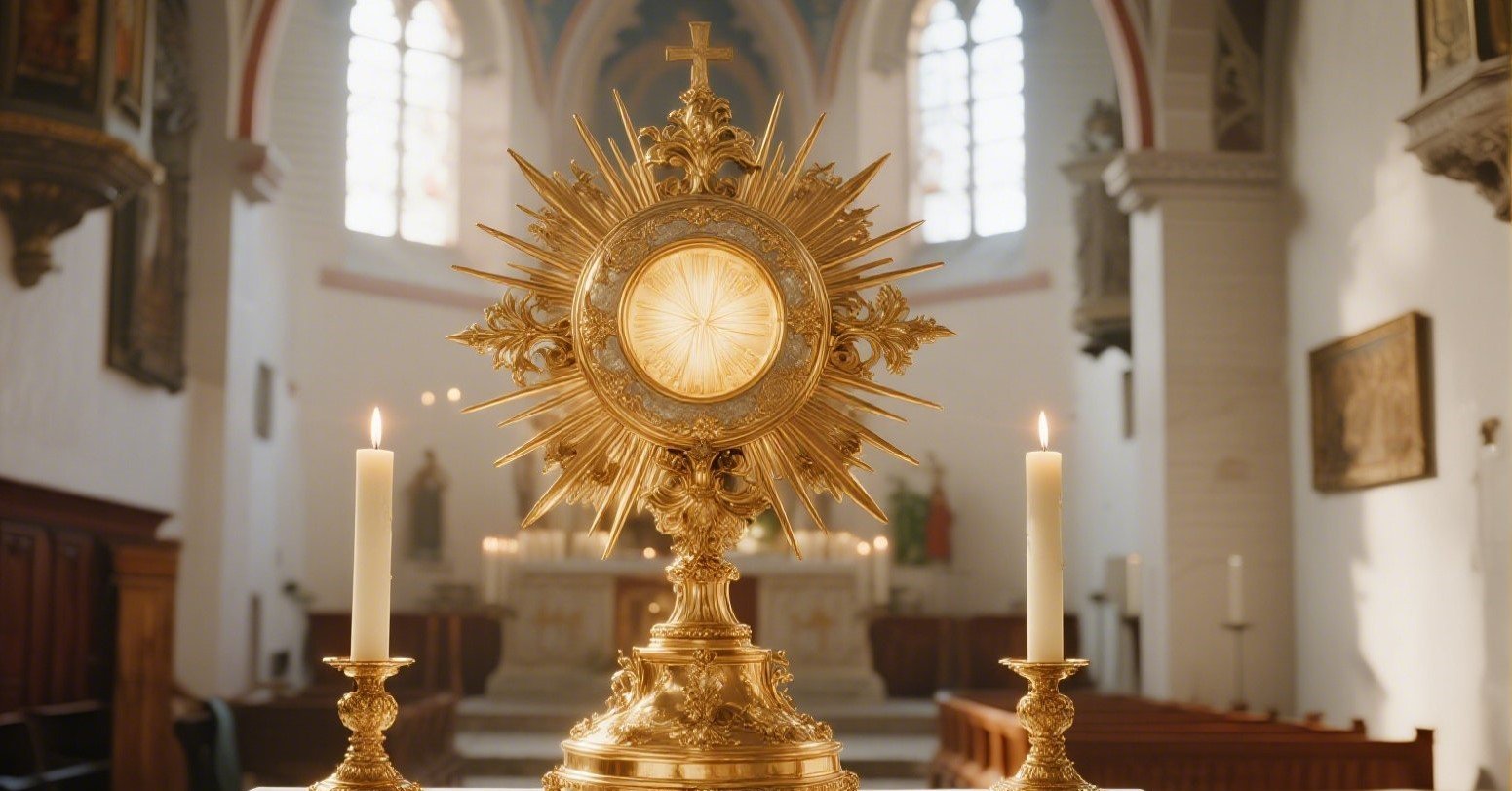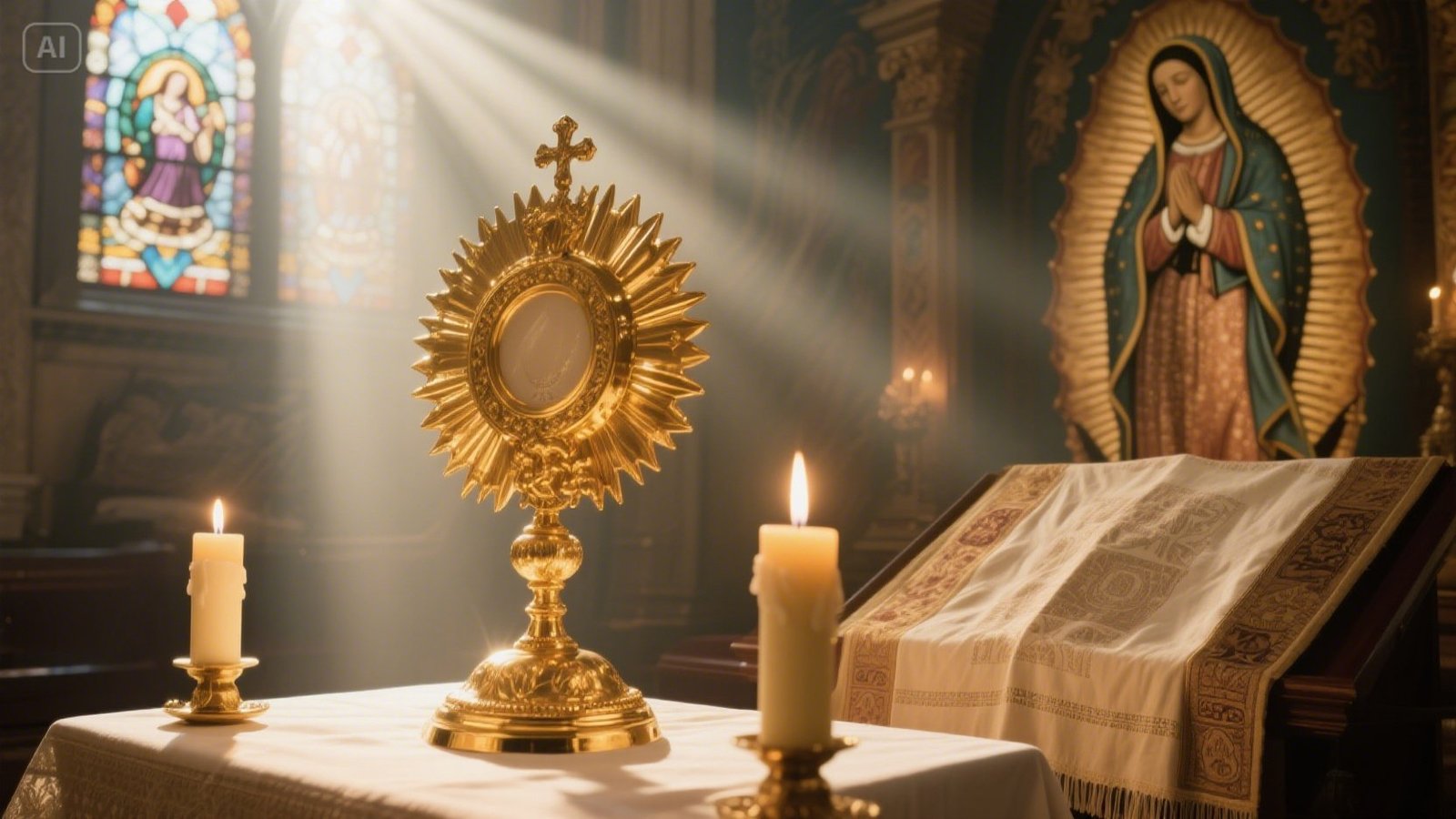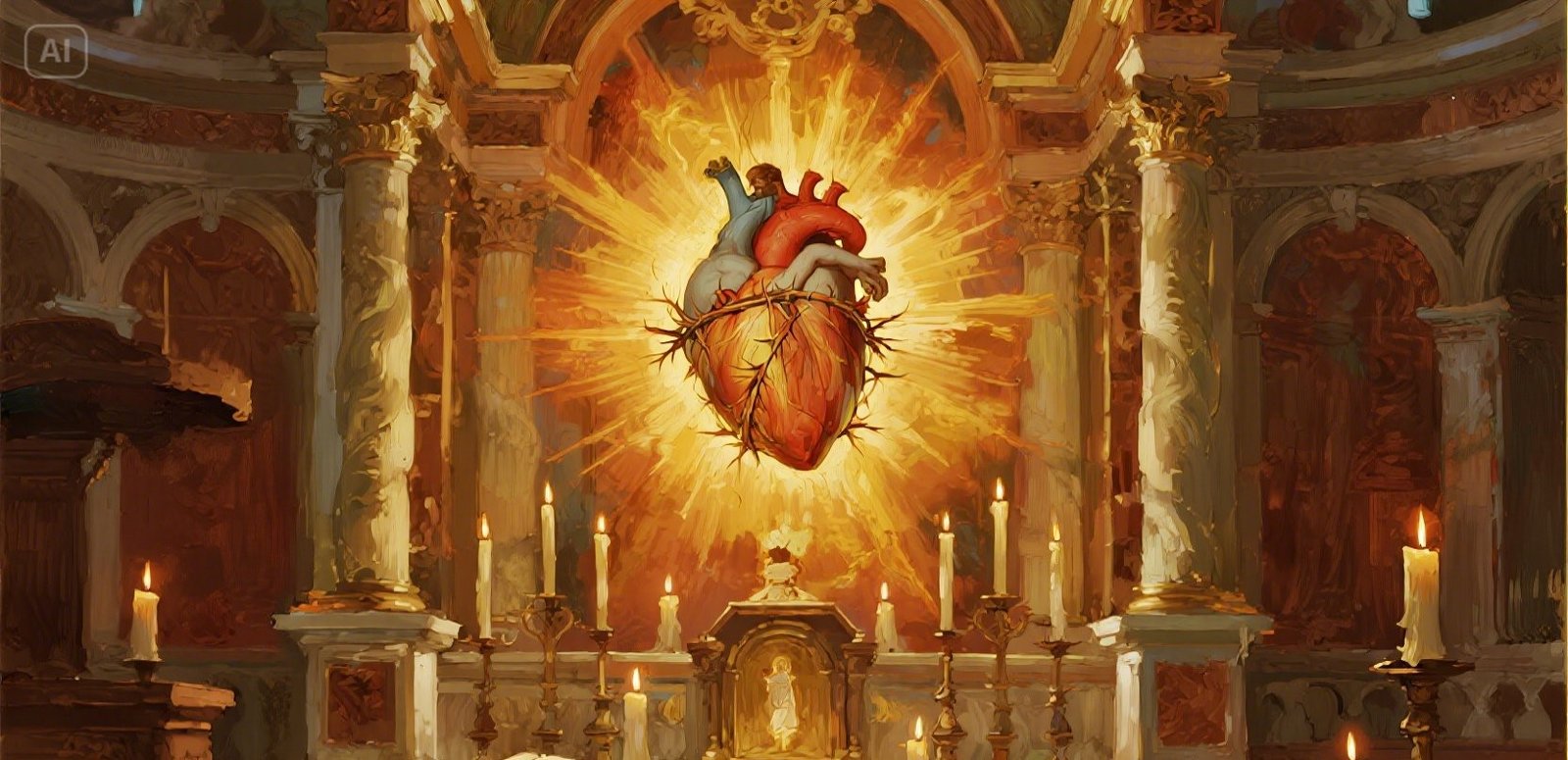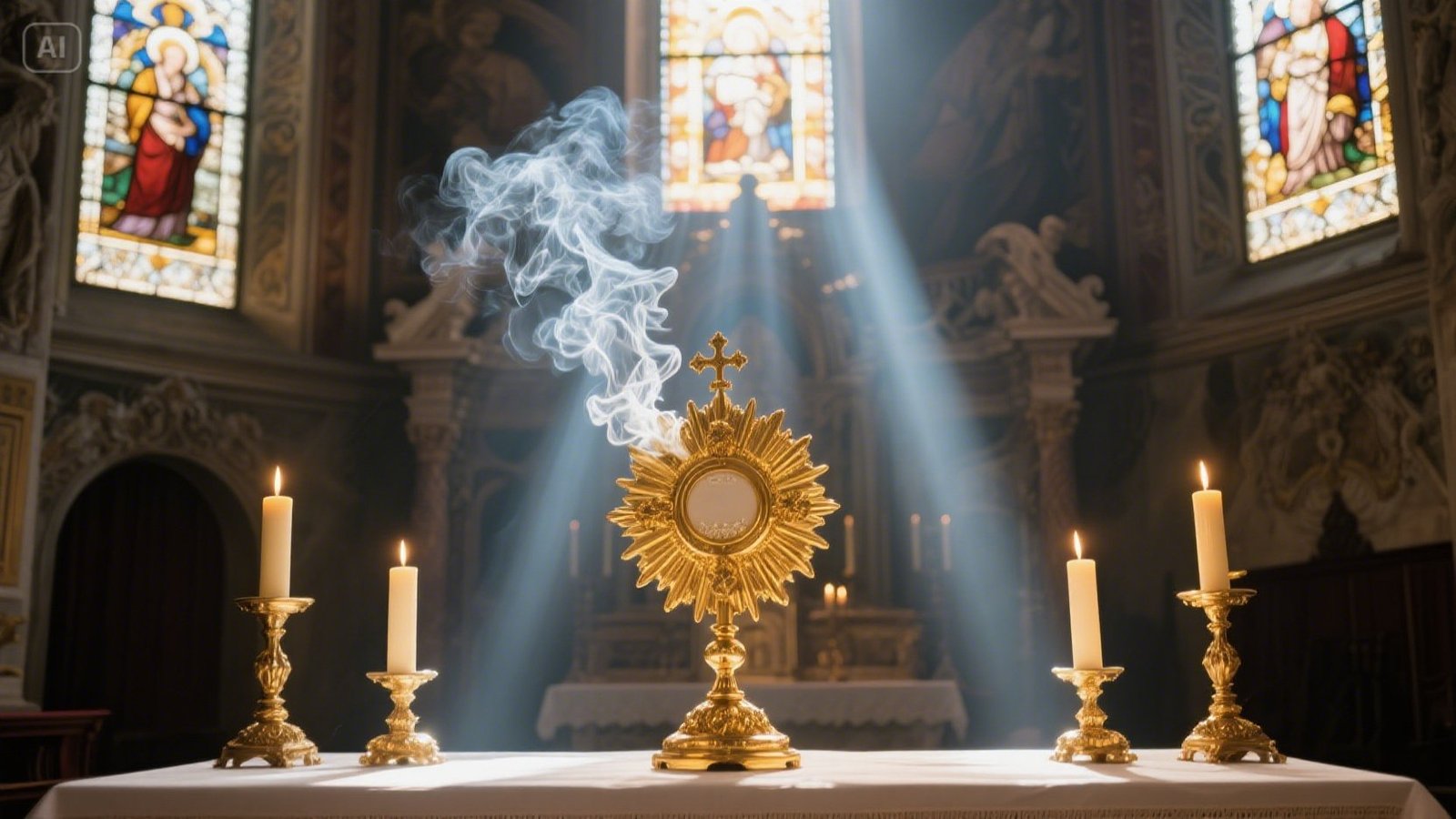
At the heart of Catholic faith lies one of the most sacred mysteries: the Eucharist. Often referred to as the “source and summit” of the Christian life, the Eucharist is far more than a symbol or ritual. It is, according to Church teaching, the real presence of Jesus Christ—Body, Blood, Soul, and Divinity—under the appearance of bread and wine. This article explores the historical foundation, theological significance, physical symbolism (including the design of the monstrance), and modern miracles that continue to confirm the sacred reality of this holy Sacrament.
I. Historical Origins of the Eucharist
A. The Jewish Roots
The Eucharist cannot be understood without recognizing its Jewish foundation. Jesus instituted the Eucharist during the Last Supper, which was a Passover meal—a deeply symbolic feast commemorating the Israelites’ liberation from slavery in Egypt. Central to this meal were the lamb, the unleavened bread, and the wine.
In Exodus 12, God instructed Moses to sacrifice a lamb without blemish and mark their doorposts with its blood to be spared from death. This lamb prefigured Christ, the true Lamb of God.
B. The Last Supper
The Gospel of Matthew (26:26-28) recounts the institution of the Eucharist:
“While they were eating, Jesus took bread, and when he had given thanks, he broke it and gave it to his disciples, saying, ‘Take and eat; this is my body.’ Then he took a cup, and when he had given thanks, he gave it to them, saying, ‘Drink from it, all of you. This is my blood of the covenant, which is poured out for many for the forgiveness of sins.'”
This moment instituted the New Covenant, replacing the sacrificial lamb with Jesus Himself.
II. Theological Meaning of the Eucharist
A. Transubstantiation
The Catholic Church teaches that during the consecration at Mass, the bread and wine become the Body and Blood of Christ, a change known as transubstantiation. Though the physical properties remain the same, the essence changes entirely.
B. The Real Presence
This doctrine of the Real Presence means that Jesus is not symbolically present but truly and fully present in the Eucharist. St. Thomas Aquinas explained this mystery in his Summa Theologica, emphasizing faith as the lens through which this miracle is perceived.
C. A Living Sacrifice
The Eucharist is a re-presentation of Christ’s one-time sacrifice on the Cross. It is not a new sacrifice but a mystical participation in the eternal moment of Calvary.
III. The Monstrance: Symbolism and Design
The vessel used to display the consecrated Host is called a monstrance, from the Latin word monstrare, meaning “to show.”
A. Physical Description
Most monstrances feature:
- A sunburst design to symbolize Christ as the Light of the World
- A central transparent window (typically glass or crystal) where the Host is placed
- Elaborate designs in gold or silver, representing purity and divinity
- Decorative rays, angels, or jewels, indicating the heavenly nature of Christ’s presence
B. The Host
The circular white Host placed at the center often resembles the sun or a divine eye—simple in appearance but profound in meaning. Christ, hidden in plain sight.
C. The Stand and Base
Monstrances usually stand tall, elevating the Host so that the faithful may adore Christ in Eucharistic adoration.
IV. Eucharistic Miracles: Divine Confirmation
The Lord, in His mercy, has permitted physical manifestations of the Eucharist throughout history. These Eucharistic miracles often involve visible transformations of the Host into what appears to be human flesh or blood.
A. Lanciano, Italy (8th Century)
A doubting priest witnessed the consecrated Host turn into actual flesh and the wine into blood. Scientific analysis confirmed that the tissue is myocardial (heart) tissue and the blood type is AB—the same found on the Shroud of Turin.
B. Buenos Aires, Argentina (1996)
A consecrated Host was found to have transformed into bloody tissue. Under then-Cardinal Jorge Bergoglio (later Pope Francis), the tissue was examined and confirmed to be heart tissue under extreme duress—again, type AB.
C. Sokolka, Poland (2008)
A dropped Host was stored in water and later appeared to contain red threads. Microscopic analysis confirmed that the threads were human heart muscle, again consistent with AB blood type.
These miracles serve not to replace faith, but to confirm it.
V. Eucharistic Adoration: A Silent Revolution
While the Mass is the central liturgical act of the Church, Eucharistic adoration invites the faithful to spend time in quiet prayer before the exposed Blessed Sacrament.
A. Healing and Conversion
Many testify to physical healing, emotional peace, and profound conversions while adoring the Eucharist. In an age of noise and distraction, adoration offers rest and renewal for the soul.
B. Global Movement
In recent decades, perpetual adoration chapels have sprung up across the world. Pope John Paul II, Pope Benedict XVI, and Pope Francis have all encouraged frequent adoration.
VI. The Eucharist in Modern Culture and Conflict
In an increasingly secular world, the Eucharist stands as a countercultural act of faith.
A. Attacks and Desecration
Unfortunately, the Eucharist is often the target of spiritual warfare. Tabernacles are vandalized, Hosts stolen or desecrated. These acts confirm the spiritual weight the Eucharist holds—even for those who deny its truth.
B. Revival and Renewal
Movements such as the National Eucharistic Revival in the U.S. aim to re-ignite belief in the Real Presence. Many young people, once apathetic, are rediscovering the awe of Eucharistic faith.
VII. A Prophetic Sign of Hope
In Marian apparitions like Fatima, Our Lady emphasized the importance of reverence for the Eucharist. Saints like Padre Pio, Mother Teresa, and John Vianney centered their lives around it.
A. Saint Quotes
- “If we only knew how God regards this Sacrament, we would risk our lives to receive one Communion.” — St. Jean Vianney
- “The Eucharist is the secret of my day. It gives strength and meaning to all my activities of service to the Church and to the whole world.” — St. John Paul II
VIII. Conclusion: The Living Flame
The Eucharist is not merely a ritual or symbol. It is the living Christ. In every Mass, in every tabernacle, on every altar across the world—He waits.
We are called to believe, to adore, to receive, and to share this living miracle. As global unrest intensifies and hearts grow cold, the Host remains a burning sun in the darkness, calling us to trust again.
Let every soul who stumbles upon this truth whisper in awe:
“This is the miracle on the altar.”



